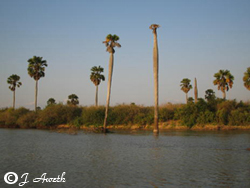|
|
|
|
| SELOUS GAME RESERVE |
| The Selous Game Reserve, covering 50,000 square kilometres, is amongst the largest protected areas in Africa and is relatively undisturbed by human impact. The property harbours one of the most significant concentrations of elephant, black rhinoceros, cheetah, giraffe, hippopotamus and crocodile, amongst many other species. The reserve also has an exceptionally high variety of habitats including Miombo woodlands, open grasslands, riverine forests and swamps, making it a valuable laboratory for on-going ecological and biological processes. Criterion (ix): The Selous Game Reserve is one of the largest remaining wilderness areas in Africa, with relatively undisturbed ecological and biological processes, including a diverse range of wildlife with significant predator/prey relationships. The property contains a great diversity of vegetation types, including rocky acacia-clad hills, gallery and ground water forests, swamps and lowland rain forest. The dominant vegetation of the reserve is deciduous |
 |
Miombo woodlands and the property constitutes a globally important example of this vegetation type. Because of this fire-climax vegetation, soils are subject to erosion when there are heavy rains. The result is a network of normally dry rivers of sand that become raging torrents during the rains; these sand rivers are one of the most unique features of the Selous landscape. Large parts of the wooded grasslands of the northern Selous are seasonally flooded by the rising water of the Rufiji River, creating a very dynamic ecosystem.
|
|
|
|
